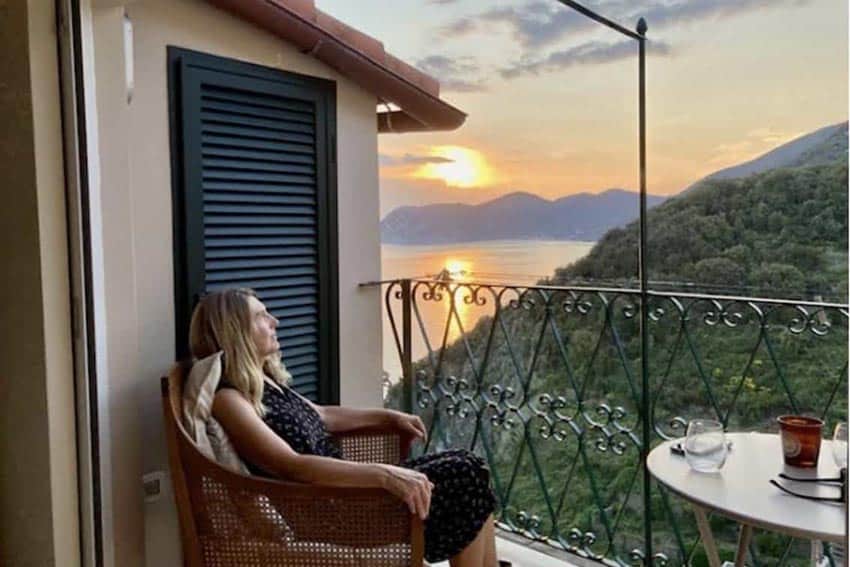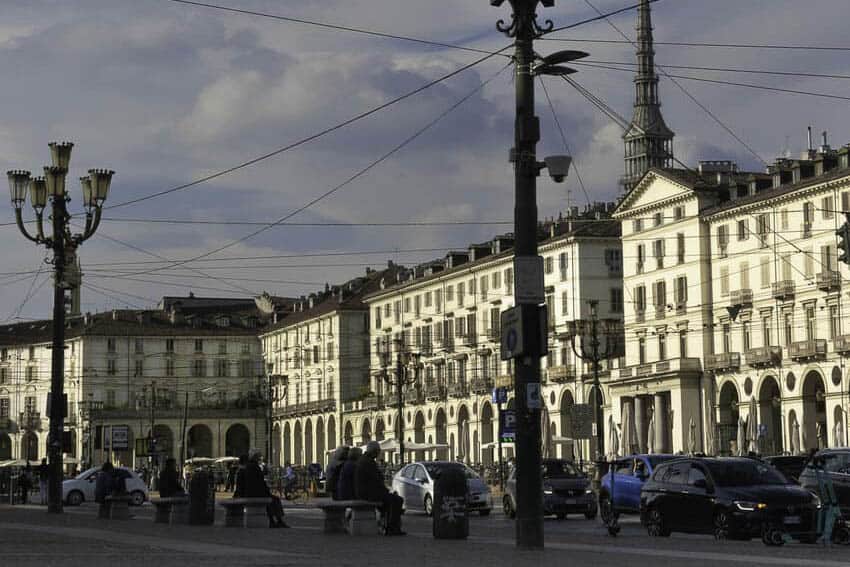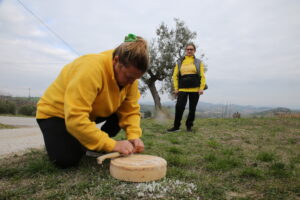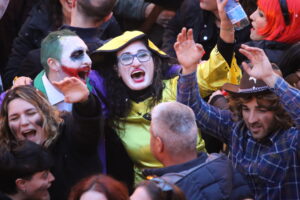Bologna, Italy: Seven of the City’s Secrets
By Catherine Edwards
Bologna is an attractive up-and-coming destination, as travelers slowly start to discover its unique blend of unspoiled beauty, vibrant history and culture, and of course, its food.
Much of its charm lies in the fact that you are free to explore it for yourself, off the tourist trail and free from crowds or preconceptions – but should you need a bit of inspiration as to where to start, here is my insider’s view, after living there for three months.
Locals often talk about the ‘seven secrets’ of Bologna – there’s some debate as to which of the city’s little known facts make the cut, but in my opinion, the most interesting are those listed here, along with a few of my own secrets about Italy’s most underrated city.
Bologna is about the most centrally located major city in Italy, it’s a perfect destination for renting a car and getting out on the road. Italy is much better explored by car than by train.
Roman roads and waterways
In the city’s main library, the Sala Borsa, the glass floor allows you to see the remains of the original Roman city on which Bologna was built – it’s also free to go downstairs and walk among them.
But the real secret and one that bypasses many casual tourists is that in the twelfth century, Bologna boasted a network of canals to rival Venice’s and a flourishing textiles industry.
On Via Piella, which is a good spot for restaurants, look out for the window onto the most beautiful of these canals, and one of the few which is still visible today; Canale delle Moline.
‘Moline’ means ‘mills’, and several other streetnames are throwbacks to Bologna’s watery history – I spotted ‘Via dei Tessitori’ (Street of the weavers), Via Venezia (Venice Street) and Via delle Drapperie (Street of the draperies).
The statue of Neptune
Because of Bologna’s waterways, the Roman God of the seas, Neptune, is one of the city’s symbols, and an elaborate statue of him takes pride of place just by the main square.
The inscription on the statue explains that its purpose was to add beauty to the central square and to serve the people, and indeed it has become the centerpiece of the city and a common meeting point.
But there’s another reason locals call it ‘Il Gigante’ (the giant). When the statue was first commissioned, the sculptor Giambologna disagreed with the Church’s modest specifications for the size of the statue’s genitals.
Giambologna had the last laugh; from a certain viewpoint (stand at the steps to the Sala Borsa) the angle of Neptune’s outstretched thumb makes him look generously endowed – and rather aroused.
Apparently, there was a convent on this corner of the street, so when the nuns looked out of their window or walked through the piazza to go to church, this was the sight that greeted them.
Bologna has a reputation as a rebellious city, and Giambologna wasn’t the only artist to have a joke at the church’s expense.
When walking to the Sanctuary of San Luca (well worth or the views over Bologna’s hills), I was surprised that there were exactly 666 archways along the portico – they’re numbered so you can track your progress – but my host family told me this was far from an accident.
The architect of the portico leading to the church had a spat with the Vatican while he was working on the project, and this use of the ‘devil’s number’ was his revenge.
The Three Arrows
The Corte Isolani on Strada Maggiore is a courtyard full of trendy bars, restaurants, and shops, but despite its modern interior, the wooden portico of its entrance dates back to the fifteenth century. Looking closely, you can see three arrows stuck in it (looking very closely, that is – I could only find two but have been assured they’re all there!).
Supposedly the arrows were shot by three criminals at a noblewoman, who had realized what was going on and distracted them by appearing naked at the window.
I’ve heard two different stories about the assassins’ motives; one said they were seeking revenge on her husband, another claimed the Lord hired them himself, to murder her after she was unfaithful. But both stories agree that the resourceful lady scuppered the archers’ plans with her well-timed nudity, and the arrows remain there to this day.
The Whispering Gallery
The phrase ‘if walls had ears’ has never been more appropriate. Look for the four archways in Palazzo del Podestà (by Piazza Maggiore) and you’ll often see people talking to the walls… the reason is the unusual acoustics, which allows two people standing at diagonally opposite corners and facing the wall to carry out a conversation as if standing side by side.
The story goes that the original purpose was for lepers to confess during the Middle Ages, without causing the disease to spread.
The shadow of Lucio Dalla
The Bolognese jazz musician has left his mark on the city in more ways than one. At the corner of Via d’Azeglio (one of the loveliest streets) and Piazza dei Celestini, Dalla’s silhouette is painted on the side of a yellow building. Around 50,000 people attended his funeral in Bologna when he died in 2012, and the shadow shows that he has not been forgotten.
“Canabis is Protection”
At the end of Via Indipendenza, across the street from Piazza Maggiore, you can see the following words etched into the pavement and the archway above: “panis vita, canabis protectio, vinum laetitia.” This roughly translates as “bread is life, canabis is protection, wine is joy.”
This area used to be a market, where these three wares were sold; the city’s canals and mills were long used for the production of hemp, and the writing is particularly fitting given Bologna’s reputation as a liberal, student city today.
The Broken Vase
A broken vase is supposed to stand atop Asinelli, the taller of the city’s two leaning towers. I’ve heard several tourists complain they couldn’t find the mythical vase – actually all that is left are a few shards which you can find set into the stonework.
They represent the resilience of the city in the midst of political conflict; it has a rich political history and was a center of the Italian Resistance in the Second World War.
As well as these ‘seven secrets’ of Bologna, all of which reveal a little bit about the city’s identity and history, I picked up a few other pieces of insider knowledge while there. As with most Italian cities, Bologna is packed with churches and eateries, and it’s easy to make the mistake of thinking that once you’ve seen one, you’ve seen them all.
In fact, some of the most interesting churches and delicious food are tucked away through doors or on streets, you wouldn’t think had much to offer. This is because their reputation precedes them; it’s a small city and word-of-mouth is the most important form of marketing.
Secrets of the churches
Three of Bologna’s churches, in particular, deserve a mention, all of which are located close to the city center. San Domenico Basilica is unassuming from the outside but contains an amazing collection of Renaissance art, there’s a Michelangelo statue, the piano Mozart used for practice when he studied in Italy, and many more curiosities in the chapel and shrine which contains the remains of Saint Dominic.
But if you’re really interested in saints, the Chiesa della Santa is the one to visit; it contains the mummified remains of St Catherine of Bologna, sitting eerily in her golden chair, as well as mummified fingers of other religious figures, in a side-chapel off the main church, which itself has many works of art. To enter the side-chapel, you have to ask, or ring the doorbell at the wooden door to the left of the entrance.
Finally, I was enchanted by the churches of Santo Stefano; there are seven, all built during different periods between the eights and fourteenth centuries and all now sprawling into each other to make one fascinating complex.
Secret Restaurants
It’s known as the food capital of Italy, and I found that it’s hard to go wrong in Bologna in terms of food, as it’s not a well known enough destination for tourist traps. However, one restaurant which is constantly packed out with locals, and for good reason (don’t be surprised if you end up sharing a table) is Osteria dell’Orsa, which is known for its simple and well-priced but delicious.
We bought their homemade pasta to take away – they had sold out of their fresh tortellini, but the mother of my host family insisted they make a new batch, telling them that I was from England and so ‘needed to learn about proper food’!
If you’re looking for a spectacular setting while you dine, Le Stanze in the student district is the former private chapel of the Bentivoglio family’s residence. They were a noble family that ruled Bologna for years and saw it flourish in the Renaissance. The high ceilings and ornate frescoes in the restaurant are a throwback to this era, giving a grand and very Italian atmosphere for drinks or dinner.

Catherine Edwards is a 2o-something student and freelance writer, who has spent the past year living and working in Bologna, Rome, Sale Marasino and now Berlin.
- Montreal’s Breweries Await Your Thirst - May 7, 2024
- Mother’s Day Ideas - May 6, 2024
- Exploring Kenya’s Night Markets - May 3, 2024





